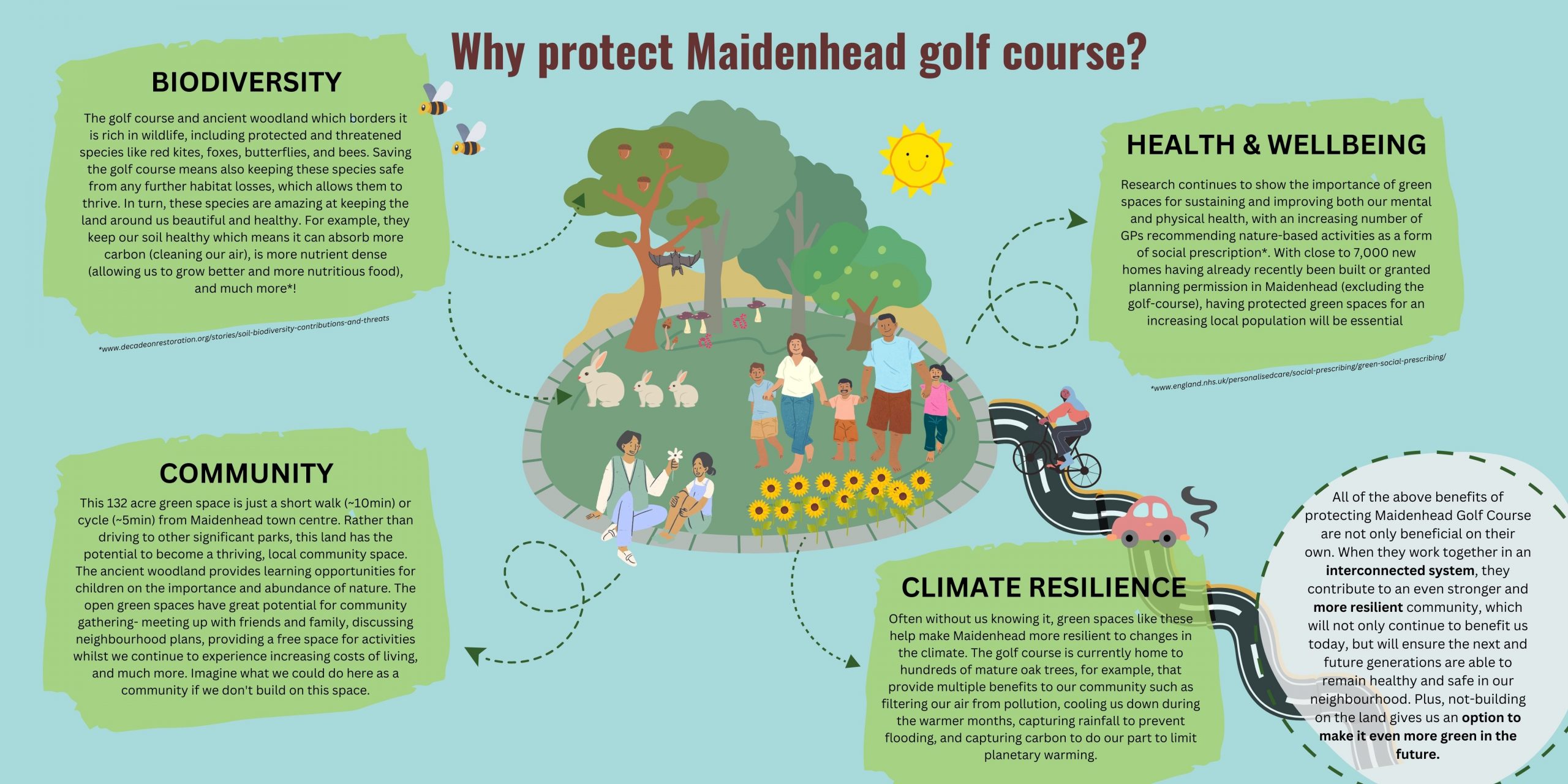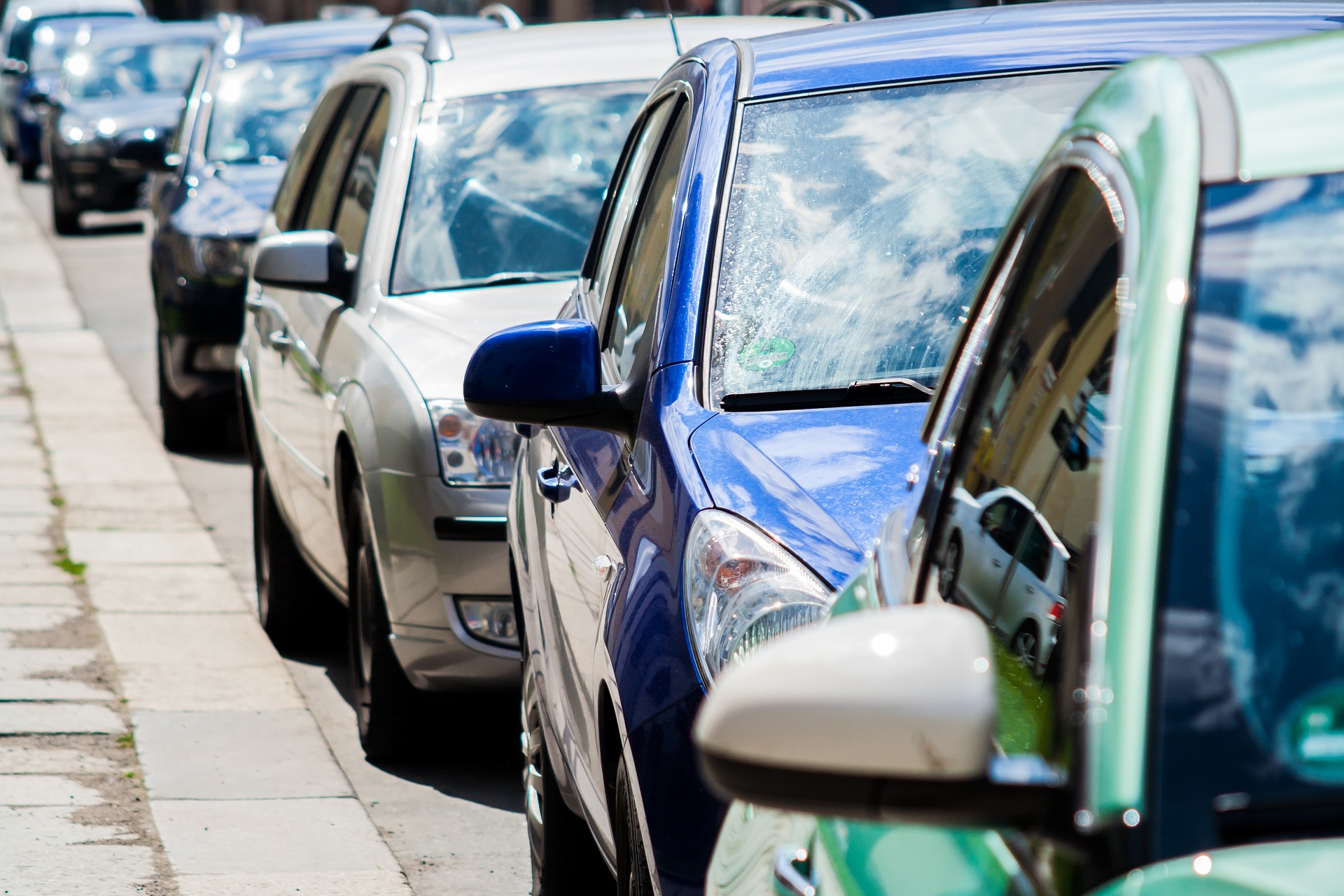
Impact of development on wildlife
Editor
- 2
- 2271

Why is the biodiversity of Maidenhead Golf Course important?
Biodiversity and well-functioning ecosystems are critical for human existence, economic prosperity and a good quality of life. Around 40% of the 55 acres of publicly owned land at Maidenhead Golf Course is broadleaved woodland and scrubland, making it an important place for nature in Maidenhead.
There are approximately 10,000 mature trees on the golf course, as well as many types of wild flowers and fungi, all supporting a rich array of wildlife, including dozens of protected species listed here: https://maidenheadgreatpark.co.uk/ecology-reports-show-biodiversity-importance-of-maidenhead-golf-course-woodlands
There are hundreds of oak trees of around 100 years in age which provide vital habitats for thousands of species, including butterflies, moths, woodland birds, bees and beetles.
In the last 20 years the number of insects and birds have declined dramatically here in the UK. If we are to halt this decline in our natural world, we must stop the destruction of woodlands and other habitats that support biodiversity. As well as being important for biodiversity, trees store and absorb carbon from our atmosphere and are vital for mitigating the effects of climate change.
Ancient Woodland on Maidenhead Golf Course
There are 2 hectares of Ancient Woodland and a small pond and stream at Rushington Copse. The Woodland Trust has recommended a 100-metre buffer zone to “preserve Rushington Copse from indirect damaging effects which could occur from the proposed development.”
The National Planning Policy Framework
The National Planning Policy Framework says local planning authorities have a duty to have regard to conserving biodiversity as part of their decision making. Priority Habitats and Species are of particular importance for nature conservation and included in the England Biodiversity List published under section 41 of the Natural Environment and Rural Communities Act 2006.
Sundew Ecology’s Preliminary Ecological Assessment of the site, prepared by Alex Cruickshank BSc (Hons) MSc MCIEEM, says: ‘The development is likely to cause a significant loss of habitat within the Site, notably improved and semi-improved grassland, woodland and scrub, some of which are considered Priority Habitats. This will have a significant negative impact on the ecology of the Site’; and ‘The loss of habitat and increased disturbance is likely to have a significant negative impact on a number of species, including reptiles, amphibians, birds, bats and badgers, all of which are afforded some legal protection.’
Biodiversity Net Gain
Paragraph 174 of the National Planning Policy Framework states that decisions should contribute to and enhance the natural environment by minimising impacts on and providing net gains for biodiversity, including by establishing coherent ecological networks that are more resilient to current and future pressures. It is impossible to deliver Biodiversity Net Gain on an already biodiversity rich site when cutting down thousands of mature trees and digging up acres of microbe rich soil.
Borough Local Plan statements re Trees, Woodlands and Hedgerows
Section 12.5 ‘Policy NR2 Nature Conservation and Biodiversity in the Natural Resources section of the Borough Local Plan says ‘Development proposals will be expected to demonstrate how they maintain, protect and enhance the biodiversity of application sites including features of conservation value such as hedgerows, trees, river corridors and other water bodies and the presence of protected species’.
Point 3 of Policy NR2 says: ‘Development proposals will be expected to identify areas where there is opportunity for biodiversity to be improved and, where appropriate, enable access to areas of wildlife importance. Development proposals shall also avoid the loss of biodiversity and the fragmentation of existing habitats, and enhance connectivity via green corridors, stepping stones and networks.’ Section 12.7 says ‘Development proposals should…protect and retain trees, woodlands and hedgerows’.
You can find the Borough Local Plan here: https://www.rbwm.gov.uk/home/planning-and-building-control/planning-policy/development-plan/adopted-local-plan
Impact on local wildlife sites
The development of the site is likely to impact on local Sites of Special Scientific Interest (SSSI) at Bray Meadows and Bray Pennyroyal Field. And the Site is roughly equidistant from three European designated features: ‘Windsor Forest and Great Park’ Special Area of Conservation (SAC) c4.5km to the south; ‘Chilterns Beechwoods’ SAC c4.7km to the northwest; and ‘Burnham Beeches’ SAC 7.0km to the northeast. Sundew Ecology’s Preliminary Ecological Assessment of the site warns ‘Because of the scale of the proposals, they are likely to have an impact on these designated sites.’
Environmental Impact Assessment (EIA)
A Maidenhead Golf Course Environmental Impact assessment (EIA) scoping report has been prepared for Cala Homes for the planned development of the golf course. You can see the full scoping report on the Council’s website Council Ref: 22/02683/EIASCO in the planning section https://publicaccess.rbwm.gov.uk/online-applications/applicationDetails.do?activeTab=summary&keyVal=RJ62PCNI0C000
The potential significant effects of the proposed development on Ecology were listed in section 6.3.22:
Construction phase
• Damage via machinery incursion, pollution and spillages/runoff on retained habitats on or adjacent to the Site including ancient woodland (Rushington Copse)
• Destruction, damage or disturbance to bat roosts in buildings and (pending survey
results) trees during Site clearance works
• Disturbance of foraging/commuting bats, and bats roosting in retained habitats
(e.g. tree roosts) due to insensitive construction lighting. Destruction of badger setts and/or killing/injury of badgers during Site clearance and construction works.
• Entrapment of badger, hedgehog and other small animals in excavations during construction work
• Destruction of nests, eggs and young of nesting birds during Site clearance works, potential disturbance of Schedule 1 protected bird species (firecrest) during clearance and construction works
• Killing/injury of slow worm during Site clearance and construction works
Operational phase
• Damage from recreational pressures (principally path erosion and trampling) to offsite protected areas including Burnham Beeches Special Area of Conservation, as well as SSSIs, Local Nature Reserves and Local Wildlife Sites within 2km.
• Permanent loss of habitats to construction footprint including broad-leaved semi- natural woodland of high ecological value, semi-improved grassland of moderate ecological value and modified grassland of low ecological value.
• Damage from recreational pressures (principally path erosion and trampling) to onsite retained habitats, particularly Rushington Copse (ancient woodland).
• Permanent loss of foraging and roosting habitat for bats and risk of disruption to
commuting corridors with attendant loss of landscape connectivity.
• Permanent loss of habitat for nesting birds including Species of Principal Importance
• Permanent loss of habitat for slow worm



It would be utter madness, not to say another disastrous attack on the continuing fragility of the Natural World if the proposed development on Maidenhead Golf Club goes ahead. You have only to look at the various concerns and statistics given in the above document by conservationists from respected fields to see the devastation and loss of vital habitat for so many important and essential species that would occur, not only in this area but other local natural areas of biodiversity if it were to go ahead. Our locality and our world, as we know it ,is on the brink of cataclysmic change and if we don’t stop the building and development on these ancient,essential sites we are endangering the existence not only of vital natural species, but risk ruining the quality of our own lifes and especially those of the coming generations. It takes only moments for a hundred years of growth and natural history and essential biodiversity to be annihilated , We do this at our peril. Wake up Maidenhead Developers and Maidenhead Council, stop money grabbing and short-sighted thinking and stop the rot while we can. We don’t want bricks and concrete and pollution and loss of essential natural habitat for Maidenhead Golf Course. Keep her vital lungs open for the mental and physical health of us all for the next hundred years and beyond before we choke in the high -rise nightmare that is fast becoming Maidenhead’s disastrous legacy to the future.